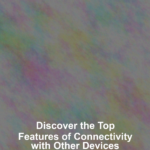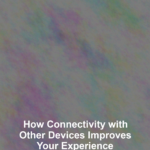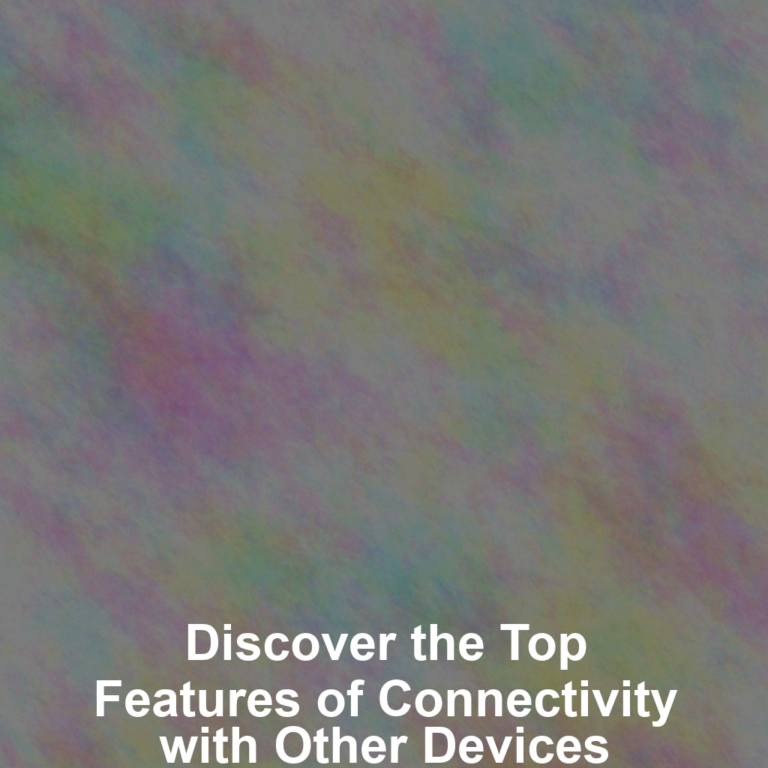Did you know that over 50 billion devices are expected to be connected to the internet by 2030? YouG??re living in a remarkable era where your phone, watch, car, and even your refrigerator can communicate with each other.
Advances in Bluetooth technology and wireless connectivity have paved the way for seamless integration between devices, offering you a level of convenience that was once the stuff of science fiction. As you explore the capabilities of Near Field Communication (NFC) and the vast potential of the Internet of Things (IoT), youG??ll uncover how cross-platform synchronization is not just about sharing data but creating a cohesive and responsive environment around you.
Smart home ecosystems are evolving rapidly, and as you stand at the threshold of this technological frontier, you might wonder how these advancements will shape your daily life in the near future. LetG??s consider the implications and the transformative power of living in a truly connected world, where the possibilities are only just beginning to unfold.
Bluetooth and Wireless Advancements
As technology evolves, Bluetooth and wireless capabilities have undergone significant advancements, enhancing how devices connect and interact with each other. YouG??ve likely noticed the seamless way your smartphone pairs with wireless headphones or communicates with your smartwatch. ThatG??s thanks to Bluetooth 5.0 and beyond, which offer increased range, speed, and broadcast messaging capacity, ensuring that you can share larger files quickly and maintain connections even when youG??re not in the same room as your device.
YouG??re no longer tethered to one spot while using your devices, either. With Wi-Fi 6, you can expect higher data rates, increased capacity, performance in environments with many connected devices, and improved power efficiency. This means your smart home devices will respond more swiftly, and you wonG??t suffer from lag when youG??re streaming or gaming, even if your entire household is online.
Furthermore, the integration of IoT (Internet of Things) technology has made it possible for you to control a myriad of devices from a central hub or even your smartphone. From adjusting your thermostat to preheating your oven, the interconnectedness of your gadgets provides you with a level of convenience that was once unimaginable.
Near Field Communication (NFC) Uses
Building on the advancements in wireless technology, Near Field Communication (NFC) further simplifies how you interact with devices by allowing touchless transactions and data exchange with a simple tap. As you go about your daily activities, youG??ll find NFC at work in various areas, enhancing your experience with its seamless functionality.
Consider these remarkable uses of NFC that you might encounter or even use every day:
- Mobile Payments: Pay for purchases with a wave of your smartphone over a compatible terminal.
- Public Transport: Tap your phone or smart card to breeze through subway or bus gates.
- Information Sharing: Quickly share contacts, photos, or files with friends by tapping your devices together.
- Smart Homes: Unlock doors or control lights and thermostats by tapping your phone against smart tags.
- Healthcare: Patients wear NFC-enabled wristbands that store their medical information, streamlining care.
YouG??re already benefiting from NFCG??s convenience if youG??ve ever tapped your phone to pay for coffee or used an access card to enter your office building. ItG??s a technology thatG??s become so integrated into your life, you mightnG??t even notice itG??s there G?? but youG??d certainly miss it if it werenG??t.
Internet of Things (IoT) Integration
The Internet of Things (IoT) revolutionizes everyday interactions by integrating smart devices into a cohesive network that you can manage from your fingertips. Imagine your morning routine streamlined with your coffee maker turning on as soon as your alarm goes off, your thermostat adjusting to the perfect temperature, and your car warming up in the drivewayG??all without lifting a finger. ThatG??s the power of IoT.
With IoT integration, youG??re not just connecting devices; youG??re creating a symphony of efficiency where every gadget communicates and reacts in real-time to your lifestyle. Your home security system, for instance, can send alerts to your phone if it detects unusual activity, and you can monitor live feeds from anywhere.
But itG??s not limited to home use. Industries are harnessing IoT to track inventory, optimize logistics, and predict maintenance on machinery before breakdowns occur. YouG??re part of a world where data from these devices informs decisions, maximizes productivity, and enhances safety.
As you embrace IoT, youG??ll find itG??s more than convenienceG??itG??s about crafting an environment that responds to your needs, learns your preferences, and anticipates your actions. And it all starts with a simple, seamless integration of technology at your command.
Cross-Platform Synchronization Features
YouG??ll appreciate the convenience cross-platform synchronization offers as it allows your devices to share data and work together seamlessly, regardless of their operating systems or manufacturers. Imagine starting a task on your phone and finishing it on your laptop without missing a beat, or having your smart home devices communicate with each other to create the perfect environment for you.
Here are some key features that make cross-platform synchronization an essential tool in todayG??s interconnected world:
- Universal Clipboard: Copy text or images on one device and paste them on another, streamlining your workflow.
- File Access and Management: Access files stored on one device from another, allowing for easy file management across platforms.
- Notification Syncing: Receive and manage your notifications from various apps on any connected device.
- Seamless Media Playback: Start watching a video on your tablet and pick up exactly where you left off on your TV or smartphone.
- Calendar and Contact Sync: Keep your schedule and contacts updated across all devices, ensuring you never miss an appointment or lose touch with important connections.
Leveraging these features not only boosts your productivity but also enhances your digital experience by creating a unified ecosystem for all your devices.
Smart Home Ecosystem Connectivity
When integrating a variety of smart devices into your home, ensure they can communicate effectively to create a cohesive and responsive environment. YouG??re looking for seamless interaction where your smart thermostat, lights, security cameras, and even your fridge work together in harmony.
To achieve this, check for compatibility with common ecosystems like Amazon Alexa, Google Assistant, or Apple HomeKit. These platforms allow you to control multiple devices from a single app or with voice commands. YouG??ll want to avoid a situation where youG??ve got a bunch of apps cluttering your phone, each for a different gadget in your house.
Look for devices that support open standards like Zigbee or Z-Wave. These technologies enable diverse products to connect on a common network, which means youG??re not locked into a single brandG??s ecosystem. YouG??ll appreciate the flexibility when you decide to expand your smart home setup.
DonG??t forget about security. As you connect more devices, youG??re expanding the potential attack surface for hackers. Make sure your devices receive regular updates and use strong, unique passwords for every device and service. YouG??re creating a smart home, so be smart about protecting it.
Conclusion
YouG??ve seen how seamless connectivity enhances your daily life. From BluetoothG??s evolution to NFCG??s tap-and-go convenience and IoTG??s smart integration, your devices are more interconnected than ever.
With cross-platform synchronization, youG??re staying in sync across all gadgets effortlessly. And, by embracing smart home ecosystems, youG??re controlling your environment with just your voice or a click.
Embrace this connected era where your tech not only works for you but also with each other.









